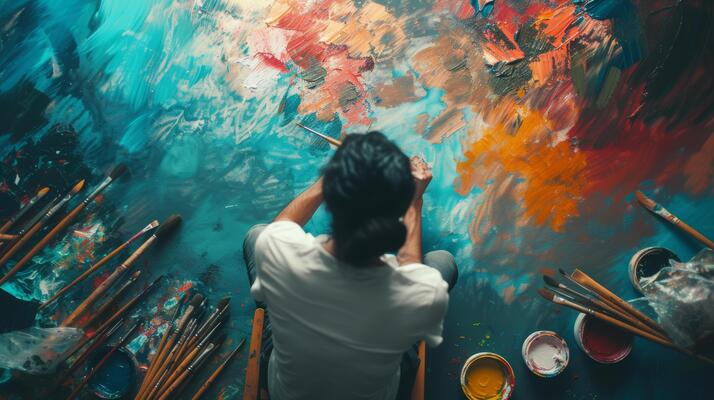Converting Photos into Outlines for Painting Mastery
In the world of professional photography, exploring new mediums and techniques can offer exciting avenues for creativity and revenue. One such fascinating process is converting photos into outlines for painting. This specialized technique not only transforms your photographic work into a different artistic form but also provides a unique selling proposition in the art market.
Professional photographers, who often find themselves yearning for new challenges and creative expression, can benefit immensely from this process. By skillfully transforming photographs into outlined drawings, you can offer clients bespoke pieces that stand out in a world saturated with digital images.

Why Convert Photos into Outlines?
There are numerous reasons to delve into this technique. First, it allows for the creation of photo-based art which adds a touch of traditional artistry to your modern photography. With the rise in demand for custom artworks, offering photo-based paintings becomes a lucrative business opportunity.
Additionally, the process of transforming photos into outlines helps enhance ones understanding of light, shadow, and compositionkey elements for any great photograph. This not only enriches your photographic skills but also broadens the scope of your artistic repertoire.
Step-by-Step Guide to Converting Photos
Converting photos into outlines for painting involves several steps, and while there are digital tools available, traditional methods can often yield a personal touch. Here's a concise guide:
- Choose the Right Photo: Opt for images with strong contrasts and well-defined subjects. These will translate better into outlines.
- Use Editing Software: Programs like Adobe Photoshop or GIMP offer tools that can simplify this process. The 'Find Edges' filter in Photoshop, for instance, is a handy tool for initial conversions.
- Refine the Outlines: After initial conversion, refine the outlines by hand or using a stylus to ensure clarity and detail are maintained.
- Print and Trace: Print the refined outline on tracing paper or use a lightbox to overlay and trace onto your painting paper or canvas.
Tools and Techniques
The role of technology in converting photos into outlines cannot be overstated. Digital platforms like Picsart offer user-friendly interfaces to start with digital conversions. However, knowing traditional methods remains crucial for those interested in the artistic enrichment of their skills.
Moreover, there's a thriving online community and numerous free tools that can assist in learning. Experimentation with different software and sharing tips with fellow artists can fast-track your learning curve, as can reading resources such as Corbins insights on photo-based painting.
Marketing Your Outline Art
Once your photo-based outlines are ready for the market, effective marketing becomes essential. Leveraging social media and online platforms can significantly boost your reach. Social media tips specifically catering to photo-based artists offer invaluable advice to optimize visibility and engage with potential clients.
Furthermore, collaboration with influencers or offering tutorials can enhance your brand presence. Establishing yourself as an expert in photo-to-outline conversions will attract more clients interested in this unique art form.

FAQ Section
Is it cheating to paint from a photo?
While some purists may argue otherwise, painting from a photo is widely accepted in the art community. It provides a reference for capturing accurate details and transforming them into a new medium.
How can I improve my skills in outlining photos?
Practice is key. Constantly refining your technique, engaging with art communities, and taking courses can greatly improve your proficiency. Consider also reading articles like Realism Today for deeper insights.
What are the best tools for photo conversions?
Adobe Photoshop is widely regarded as a leading tool for such tasks due to its comprehensive features. For those looking into simpler tools, apps like Picsart offer effective solutions as well.
Conclusion
Embracing the skill of converting photos into outlines for painting not only adds a new dimension to your photography but also broadens your artistic capabilities. As professional photographers seek to distinguish their work, this method provides an opportunity to blend technology with traditional art forms. By leveraging available resources and communities, you can create compelling artworks that resonate with contemporary art lovers and collectors alike.
For further insights on expanding your photography business, explore our blogging tips for photo-based painting. Keep innovating and exploring this dynamic intersection of photography and painting to maintain a competitive edge in the art world. Happy creating!

